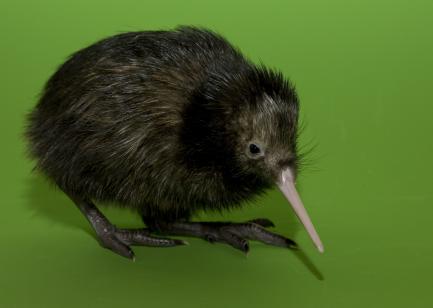Ambassador Names National Zoo’s First Female Kiwi Chick
History was made March 30 in the Bird House at the Smithsonian’s National Zoo when its first female brown kiwi chick (Apteryx mantelli) emerged from her shell. To mark this historic hatching, keepers bestowed the honor of naming the chick on one of her countrymen: New Zealand Ambassador to the United States Roy Ferguson. He named the chick Hiri (pronounced “HEE-ree”), which means “important and great” in Māori, New Zealand’s official indigenous language. This hatching is as significant a milestone for the National Zoo as it is for kiwi populations worldwide—currently, there are only 12 female brown kiwi in zoos outside New Zealand.
Ambassador Ferguson has worked hard to build local and worldwide support of the National Zoo’s kiwi programs. “I whole-heartedly support the Smithsonian’s National Zoo’s kiwi conservation efforts,” Ambassador Ferguson said. “They do a fantastic job.”
The National Zoo has had success in breeding these unique birds. In 1975, it became the first zoo outside of New Zealand to have a successful hatching. That chick, Toru, is currently on exhibit in the Bird House. The Kiwi Species Survival Plan has since thrived at the Zoo, producing three additional chicks from February 2006 to March 2010. Like her wild-caught father, Maori, Hiri will become a valuable breeder because her genes are not well-represented in the captive population. Although Hiri will not be on exhibit, the public can watch her forage in her next box via the Zoo’s Kiwi Cam.
Kiwi are unique to New Zealand. Before people populated the land, kiwi lived without land-mammal predators or competitors. Today, invasive species such as dogs, cats and stoats (a species of weasel) have devastated populations of all five kiwi species. New Zealand is working to reduce chick deaths. One program, Operation Nest Egg, removes eggs and chicks from the wild, rears them in captivity and releases them back to the forests once they weigh 1 kilogram—the weight at which they can defend themselves from most predators. Programs such as this improve the kiwi populations’ chance for survival enormously. Brown kiwi are considered endangered by the International Union for Conservation of Nature.
Visitors can meet Manaia—Hiri’s oldest brother—and learn about New Zealand’s extensive conservation efforts every Monday, Wednesday and Friday in the Zoo’s “Meet a Kiwi” program, located in the Bird House.
# # #
More photos of Hiri can be found on flickr.com: http://www.flickr.com/photos/nationalzoo/tags/kiwi/
Photo Credit: Mehgan Murphy, National Zoo
Communications Department, Smithsonian's National Zoological Park, (202) 633-3055


